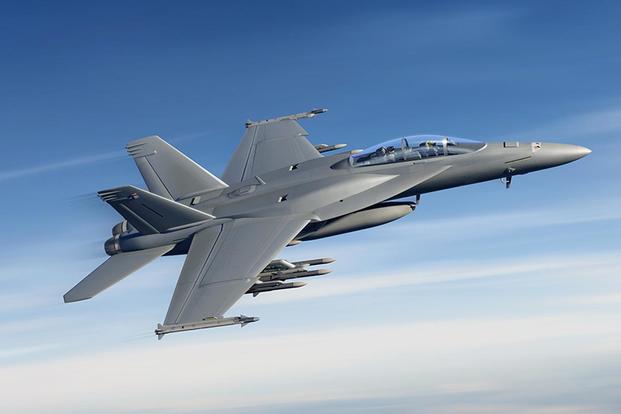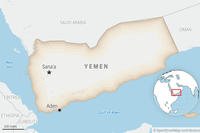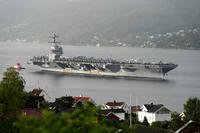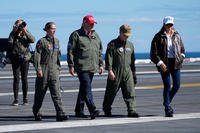NATIONAL HARBOR, Md. -- While President Donald Trump has publicly cited a desire to see Boeing build a stealthy F/A-18 Super Hornet, new modifications planned for the aircraft are not going to result in a plane that totally avoids radar detection, according to company executives.
The Super Hornet is currently undergoing new modifications to give it upgraded stealth coating, smarter tactical targeting, improved communications, advanced cockpit displays. The mods will also extend the plane's service life into the foreseeable future.
"So the airplane's already a [low-observable] platform," said Bob Kornegay, senior manager of business development for the F/A-18E/F and EA-18G at Boeing.
"We're making minor improvements to ... the amount of coatings we put on the airplane," Kornegay said during an interview here at the annual Sea-Air-Space exposition.
"It's not classed as a very low-observable, but it is an LO aircraft. So we're taking advantage of what was built into the airplane from the beginning, adding some additional coatings, and bringing it down a little further," Kornegay said.
During Sea-Air-Space Military.com took a ride in Boeing's F/A-18 simulator, which incorporated some of the new cockpit displays from the latest upgrades, known as Block III.
Related content:
- New Precision Weapon Allows F-35C to Destroy Targets in Stealth Mode
- Future Super Hornets Will See Through Stealth, Boeing Says
- Trump Eyes 'Big Order' of New F/A-18XT Super Hornets
"No airplane is invisible," Kornegay said. "We just bring the radar cross-section down, so it has a lower signature, and that's what we've done."
The conversation surrounding a prospective stealthy Super Hornet has remained active, thanks in large part to Trump. He frequently tout the upgrades to his "favorite plane" when discussing the U.S. military.
During a trip to Boeing in March, Trump applauded the company's work on incorporating the "latest and greatest stealth" onto the aircraft. Recently, both Defense News and Aviation Week have investigated the claims.
Before taking office, Trump said he was exploring the Super Hornet as an alternative to the F-35 Joint Strike Fighter, saying the "F-35 program and cost is out of control."
Kornegay on Wednesday said Boeing doesn't anticipate the Super Hornet with Block III upgrades to be in direct competition with the F-35.
"We talk about complementary capabilities. The Super Hornet and F-35 will both exist well into the 2040s, and we provide complementary capabilities to what they provide [because] working together, we make a much stronger air wing," he said.
Kornegay said an example of the jets working together would be one aircraft taking on an air-to-air mission while the other is out striking targets.
"We can carry eight [AIM-120 Advanced Medium-Range Air-to-Air Missiles], which is a nice air-to-air package, while maybe the F-35 can do an air-to-ground mission," he said.
Block III offers the ability for the Super Hornet to carry a larger variety of weapons and have extended range.
And the signature "allows you to not be seen by the enemy until you can get closer to them," Kornegay said.
Improvements are ongoing, with new jets expected to enter service with Block III upgrades by 2020, Boeing has said.
Last year at this show, Dan Gillian, manager of F/A-18 and EA-18 programs, announced the upgrade effort, outlining a multi-pronged approach to assist the Navy in making its Super Hornet fighter jet fleets more potent in current and future missions
For Super Hornets currently in the fleet, service life modification -- engineering and sustainment improvements designed to increase the aircraft's operational life -- is being incorporated "into every Block II that comes into the factory to have its life extended, and send it out as a Block III with a 3,000-hour life extension," Kornegay said.
"Eventually all the Block II aircraft the Navy has today will become Block IIIs plus all the 110 Super Hornets in the fiscal 2019 budget [request], those will all be Block III when they come off the production line," Kornegay said.
The service intends to spend roughly $9.2 billion for their procurement, while extending the Super Hornets' flight hours from 6,000 to 9,000 hours.
-- Oriana Pawlyk can be reached at oriana.pawlyk@military.com. Follow her on Twitter at @oriana0214.
Related Video:












